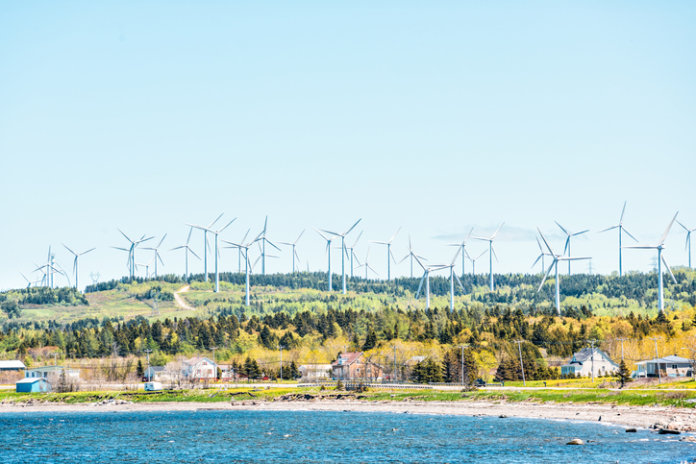Canada’s non-hydro renewable power capacity grew by more than 8% in 2016, adding nearly 1.3 GW of solar, biomass and wind-generated power, according to the National Energy Board’s (NEB) 2017 update of the “Canada’s Renewable Power Landscape 2017” report.
In 2016, Canada’s electricity generation was 66% renewable, with non-hydro renewables accounting for 7.2% and hydro accounting for 58.8%. When nuclear power generation is added, a total of 80.6% of Canada’s electricity was non-emitting in terms of greenhouse gases, according to NEB.
Notably, the report says, the long-term trend in Canada since 2005 has been increased power generation from natural gas and wind, as well as decreased generation from coal.
According to NEB, wind power was the dominant source of new non-hydro renewable capacity last year. Across Canada, 830 MW of new wind capacity was added in 2016, while 463 MW of solar and biomass capacity was added. In Ontario, Quebec and Nova Scotia, wind comprised over half of net capacity additions. This was particularly noteworthy for Quebec, a province that generates 95.2% of its electricity from hydro; however, wind capacity additions surpassed those of hydro by 104 MW.
Ontario led the country in total wind (467 MW), biomass (188 MW) and solar (172 MW) capacity additions, the report notes.
In 2016, total Canadian natural gas-fired power generation actually dropped due to decreases in British Columbia, the Northwest Territories, Manitoba, Ontario, and Newfoundland and Labrador. However, in Alberta, Saskatchewan, New Brunswick and Nova Scotia, natural gas generation increased as part of these provinces’ ongoing transition away from coal, NEB reports.
“Since 2005, the electricity sector has cut its greenhouse-gas emissions by one-third, even though Canada’s total emissions only fell by 2.2 percent in that same time period,” comments Shelley Milutinovic, chief economist at NEB. “While hydro will remain Canada’s dominant source of power, we continue to see impressive gains in non-hydro renewable capacity from wind, solar and biomass.”
Furthermore, between 2005 and 2016, coal generation decreased from 16.1% to 9.3% of Canada’s total generation, while natural gas generation increased from 6.8% to 9.6%.
Contrary to longer-term trends, Canada’s net natural gas capacity and generation decreased in 2016 – primarily due to the retirement of the Burrard Thermal Generating Station in British Columbia (approximately 900 MW).
Nuclear power, currently located exclusively in Ontario and New Brunswick, supplied an average of 14.7% of Canada’s electricity from 2005 to 2016, and it was the second-largest source of total generation.
The full report can be downloaded here.




